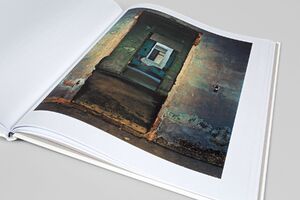Contact
art book cologne GmbH & Co. KG
Deutzer Freiheit 107
50679 Köln
Germany
Opening hours (office and showroom):
Monday to Friday 8 – 17
info@artbookcologne.de
Phone: +49 221 800 80 80
Fax: +49 221 800 80 82
About us
art book cologne, founded by Bernd Detsch in 1997, is a wholesale company and specializes in buying and selling high quality publications in art, art theory, architecture, design, photography, illustrated cultural history and all related subjects internationally. Our team includes specialists in art, culture, music, book trade and media but in spite of our diversity we have one common ground: the enthusiasm for unique art books.
We purchase remaining stocks from museums, publishers and art institutions. We sell these remainders to bookstores, museum shops, and art dealers all over the world.
Robert Polidori – Hotel Petra
| Publisher | Steidl |
| Year | 2016 |
| Cover | Cloth |
| Language | English |
| Note | Four Color Printing |
| ISBN | 978-3-95829-184-3 |
| Pages | 96 |
| Weight | 1254 g |
| Illustrations | with 80 ills |
| More | |
| Article ID | art-14980 |
This book is Robert Poldori’s portrait of the interiors of the now demolished Hotel Petra in Beirut, a grand icon of the city’s pre-warhistory.
The Hotel Petra was once one of the most popular hotels in Beirut, conveniently located in the city center adjacent to the Grand Theatre. After the Lebanese Civil War of 1975–90, Rafi q al-Haririfounded a holding company, Solidere, whose goal was the selective demolition and reconstruction of downtown Beirut’s urban fabric. In 1992 the Hotel Petra was set aside for later restoration, and from that moment essentially cut off from any human intervention.
Polidori gained access to this site in 2010, almost twenty years after its mothballing, and was transfixed by what he discovered: “It’s truly rare to find examples of such undisturbed decomposition,” he explains. “Usually the normal wear and tear of human traffic would violate and destroy the surfaces of such a delicate ecosystem of layered paint. I came to view these walls as a living process of slow decay whose end effect closely resembled the concerns of many contemporary abstract painters … only in this case their genesis was not fixed or intentional, but the gradual summation of several painters and workmen modifying the wall surfaces at different points in time for a range of reasons. I was quite taken by their beauty and was moved to photograph them for posterity.”












